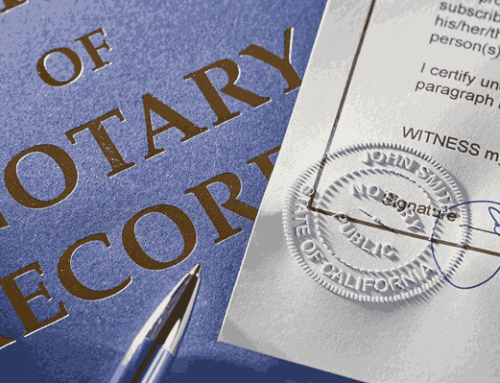In a world where justice and the protection of citizens’ rights take center stage, every decision, case. And action holds the power to profoundly impact lives and society as a whole.
But here’s the question: How can technology empower these teams to make a genuine difference, far beyond simply keeping up with the times?
Join us as we embark on a journey where the convergence of law and technology unveils a transformative potential. And enabling government legal teams to navigate high-stakes challenges.
In this blog, we embark on a journey into the extraordinary ways technology empowers government agencies’ legal teams, toward greater efficiency, enhanced collaboration, and unparalleled success.
Empowering Legal Teams through Technology
This heading suggests that technology is empowering legal teams, indicating that it enables them to enhance their capabilities and achieve better results.
Streamlining Document Management
Government legal teams deal with a vast amount of documents, including laws, regulations, policies, case files, and contracts. Traditional paper-based systems can be time-consuming, inefficient, and prone to errors. By implementing document management software, legal teams can digitize their records, enabling easy search, retrieval, and sharing of information. Advanced tools like optical character recognition (OCR) can convert scanned documents into editable text, saving valuable time and effort. Moreover, metadata tagging and categorization can improve document organization and ensure swift access to relevant information.
Enhancing Collaboration and Communication
Technology can facilitate effective collaboration and communication through various means. Platforms like Microsoft Teams or Google Workspace enable teams to collaborate in real-time, sharing and editing documents while maintaining version control, and enhancing productivity. Additionally, video conferencing and messaging apps enable remote collaboration, breaking down geographical barriers and enhancing communication with external partners.
Automating Routine Tasks
Automating repetitive and time-consuming tasks can help government legal teams streamline their processes. AI and machine learning can automate mundane legal processes, allowing legal professionals to prioritize strategic and complex matters.
AI-powered contract review software analyzes contracts for risks, inconsistencies, and compliance issues, minimizing manual review time and effort. Automation not only improves efficiency but also minimizes the risk of human error and ensures consistency in legal processes.
Conducting Legal Research
Legal research is a critical component of government legal work, but it can be an arduous and time-intensive process. Technology offers powerful tools to expedite and enhance legal research. Online legal databases like LexisNexis or Westlaw offer access to extensive collections of case law, statutes, regulations, and legal commentaries.
Advanced search features, citation analysis tools, and natural language processing improve the speed and efficiency of information retrieval for legal professionals. Additionally, AI-powered research assistants can assist in analyzing and summarizing legal documents, saving significant research time.
Enhancing Data Security and Privacy
Government agencies deal with sensitive and confidential information, making data security and privacy paramount concerns. Technological solutions can bolster security measures and protect against unauthorized access, data breaches, and cyber threats. Implementing encryption, multi-factor authentication, secure file sharing, and strong firewalls strengthen data protection.
Cloud-based solutions provide improved data redundancy and disaster recovery mechanisms, ensuring the safety and availability of critical legal information. Regular security audits and employee training on cybersecurity best practices are also essential.
Improving Case and Workflow Management
Managing cases, deadlines, and workflows are crucial for government legal teams. Technology can provide robust case and workflow management solutions that streamline processes and enhance efficiency. Case management software enables legal professionals to track case progress, automate document generation, manage deadlines, and improve team collaboration.Workflow automation tools automate repetitive tasks, send notifications for pending actions, and ensure adherence to established processes, enhancing productivity. Integration with calendars and task management systems helps prioritize tasks and manage workloads effectively.

The Importance of Technology Adoption for Legal Teams
Embracing technology is of utmost importance for legal teams in today’s dynamic landscape. It serves as a catalyst for improving efficiency, enhancing collaboration, and achieving optimal outcomes. Here are compelling reasons why adapting to technology holds significant value for legal teams:
Efficiency and Productivity: Technology automates repetitive tasks, streamlines processes, and enhances overall efficiency. Legal teams can leverage technology to manage documents, conduct research, automate contract reviews, and streamline matter management.
By automating time-consuming tasks, legal professionals can prioritize strategic and complex matters, resulting in improved productivity and resource allocation.
Access to Information: Technology provides legal teams with easy access to vast amounts of information, including laws, regulations, case law, and legal commentaries. Online legal databases and research tools enable quick and comprehensive searches, saving significant time and effort in legal research. Technology also facilitates knowledge sharing and collaboration among team members, ensuring that everyone has access to relevant and up-to-date information.
Collaboration and Communication: Technology enables seamless collaboration and communication within legal teams and with external stakeholders. Cloud-based collaboration platforms, videoconferencing, and messaging apps enable seamless real-time document sharing, simultaneous editing, and efficient communication across different geographical locations. This fosters better teamwork, coordination, and collaboration, leading to improved outcomes and faster resolution of legal matters.
Data Security and Privacy: Legal teams deal with sensitive and confidential information. Technology provides robust security measures to protect against unauthorized access, data breaches, and cyber threats. Encryption, multi-factor authentication, secure file sharing, and firewalls help safeguard confidential data. Additionally, technology offers data redundancy and disaster recovery mechanisms to ensure the safety and availability of critical legal information.
Accuracy and Consistency: Technology minimizes the risk of human error and ensures consistency in legal processes. AI-powered tools outperform manual methods in reviewing contracts, identifying risks, and analyzing extensive data with superior accuracy and speed. This reduces the likelihood of oversight or inconsistencies in legal documents and improves the overall quality of legal work.
Cost Efficiency: Technology can help reduce costs associated with legal operations. By automating tasks, improving efficiency, and minimizing the need for manual resources, technology enables cost savings for government agencies. It eliminates physical storage needs for documents and reduces paper usage, promoting an eco-friendly approach.

How to Select the Best Technology for Exceptional Legal Teams?
Selecting the most suitable technology for a high-performing legal team requires a thoughtful and strategic approach. Here are key considerations to ensure you are using the best legal tech in your law firm.
Identify Specific Needs: Begin by understanding the specific needs and pain points of your legal team. Consider the tasks and technologies that can improve or automate processes. Consult with team members to gather insights and identify areas where technology can have the most significant impact.
Research Available Technologies: Conduct thorough research on the available technologies and solutions in the market. Consider technologies that align with the identified needs of your legal team. Explore options, such as document management software, legal research platforms, contract management tools, matter management systems, and collaboration platforms. Look for solutions that have positive reviews, and a track record of success. These features and tools are tailored specifically for legal professionals, enhancing their ability to find relevant information with speed and efficiency.
Scalability and Integration: Consider the scalability and integration capabilities of the technology. Will the solution be able to grow with your team and accommodate future needs? Make sure the technology seamlessly integrates with your current systems and software, including email clients, document repositories, and calendar tools. Compatibility and ease of integration are crucial for maximizing the benefits of technology adoption.
User-Friendliness: Usability is essential for the successful adoption of technology. Evaluate the user interface, navigation, and overall user experience of the technology. A user-friendly solution reduces training time and facilitates effective technology utilization by legal professionals.
Vendor Reputation and Support: Assess the reputation and track record of the technology vendor. Look for established and reputable vendors that have a history of providing quality products and reliable customer support. Check for customer reviews, testimonials, and references to gain insights into the vendor’s responsiveness, reliability, and commitment to customer satisfaction.
Data Security and Compliance: Given the sensitive nature of legal information, prioritize data security and compliance features. Ensure that the technology solution adheres to industry standards and regulations for data protection. Look for features such as encryption, access controls, audit trails, and compliance with relevant data privacy laws.
Cost and Return on Investment (ROI): Consider the cost implications and potential return on investment of the technology. Consider the pricing structure, including fees, implementation costs, and support, in relation to the expected benefits and efficiencies gained from adopting the technology. Conduct a cost-benefit analysis to determine the potential ROI for your legal team.
Pilot Testing and Evaluation: Before making a final decision, consider piloting the technology with a smaller group of legal professionals. This allows for hands-on testing and evaluation of the technology’s suitability and effectiveness within your specific context. Solicit feedback from pilot users and assess whether the technology meets the identified needs and provides the desired outcomes.
In summary, technology is a crucial tool for government legal teams to optimize operations and provide more effective legal services. With its tailored features for government legal departments, MatterSuite offers a comprehensive platform that revolutionizes legal operations. Experience unparalleled efficiency and success with MatterSuite—empowering legal professionals with document management, collaboration tools, and automated workflows. Embrace technology’s transformative power and visit MatterSuite today to take the first step.





